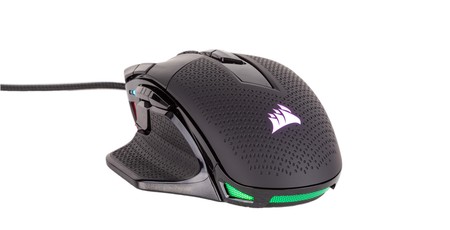
Manufacturer: Corsair
UK price: £69.95 (inc. VAT)
US price: $69.99 (exc. tax)
Corsair really has gone rather mouse crazy in 2019; this is the sixth new mouse I’ve seen from the American firm this year. The key features on this 10-button design are its purely palm-grip ergonomics, four-zone RGB lighting, a multitude of weight adjustment options, and an "18,000" DPI sensor.

Like many a palm-grip mouse before it, the Nightsword RGB is large. It is, after all, designed to fully fill a cupped hand, and even by this point in the review you’ll probably know whether its frame appeals to you or not. I tend to prefer palm-grip mice, but for what it's worth, I do feel Corsair has done a decent job with the ergonomics. Note that this is not a mouse with swappable side sections, so this is the shape you’re stuck with.

It’s not, however, the weight you’re stuck with. Supplied with the mouse is a set of weights inside a plastic capsule, three hollow cylinders weighing ~2.8g and three full cylinders weighing ~4.5g. These can be inserted into or removed from the dedicated central section of the mouse, which is accessed by unclipping a simple but secure plastic cover on the underside.
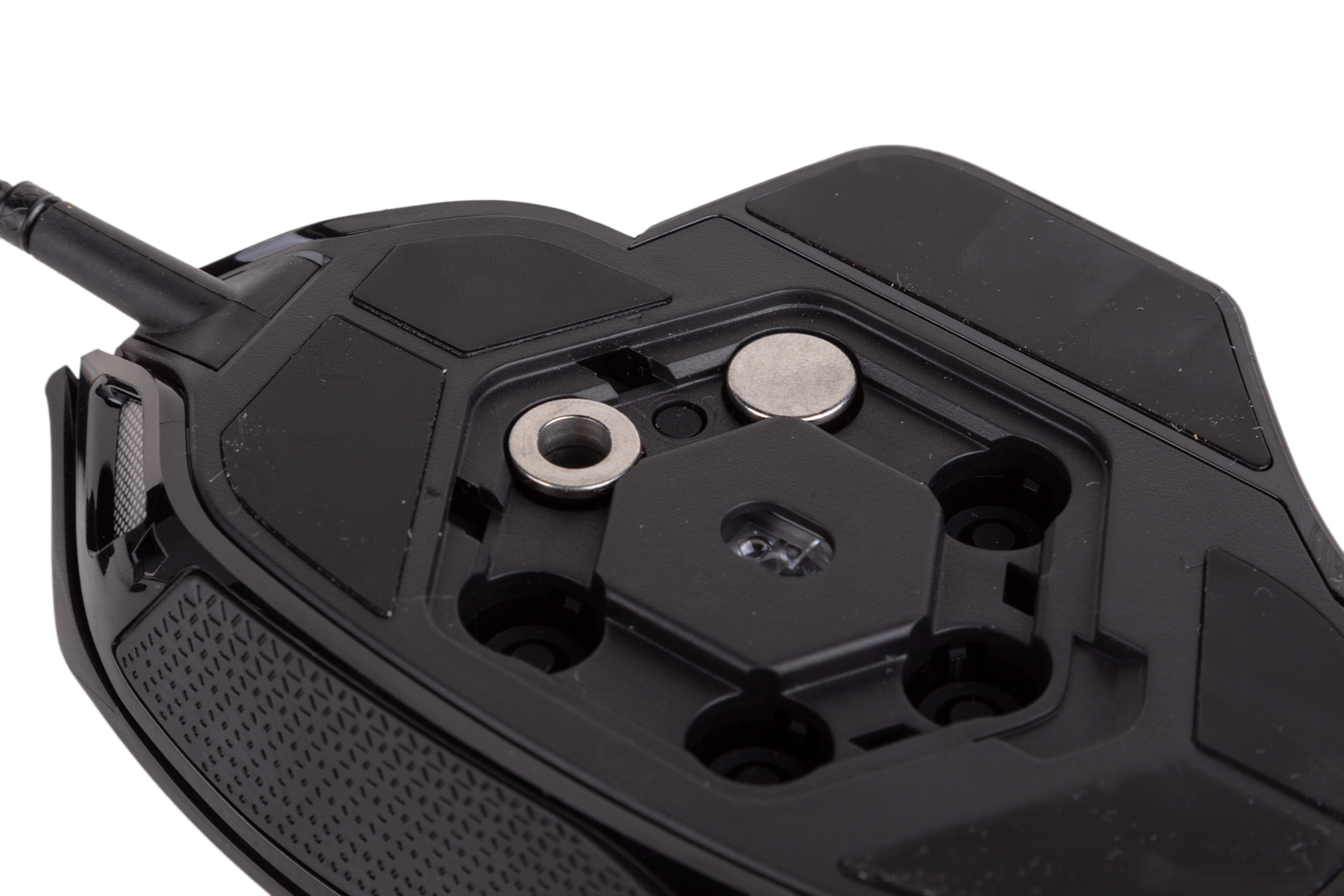
There are six holes in total, so you can use as many or as few of the weights as you wish and play around not just with the weight but the balance as well. The weight can vary between 119g and 141g, and Corsair boasts that there are 120 different combinations possible. The default, unweighted centre of gravity is very… central, so it’s pretty easy to go from there and make the mouse more back- or front- (or side-?)heavy as you see fit.

Build quality is largely solid, and the materials vary depending on where you look. The side sections have a soft-touch, slightly rubberised texture, which makes sense given their use in gripping the rodent. The rear of the top cover is matt and has an inoffensive texture, while the two isolated main clickers have a fully smooth matt surface. The combination works well, and I can’t say I was ever dissatisfied with the comfort.
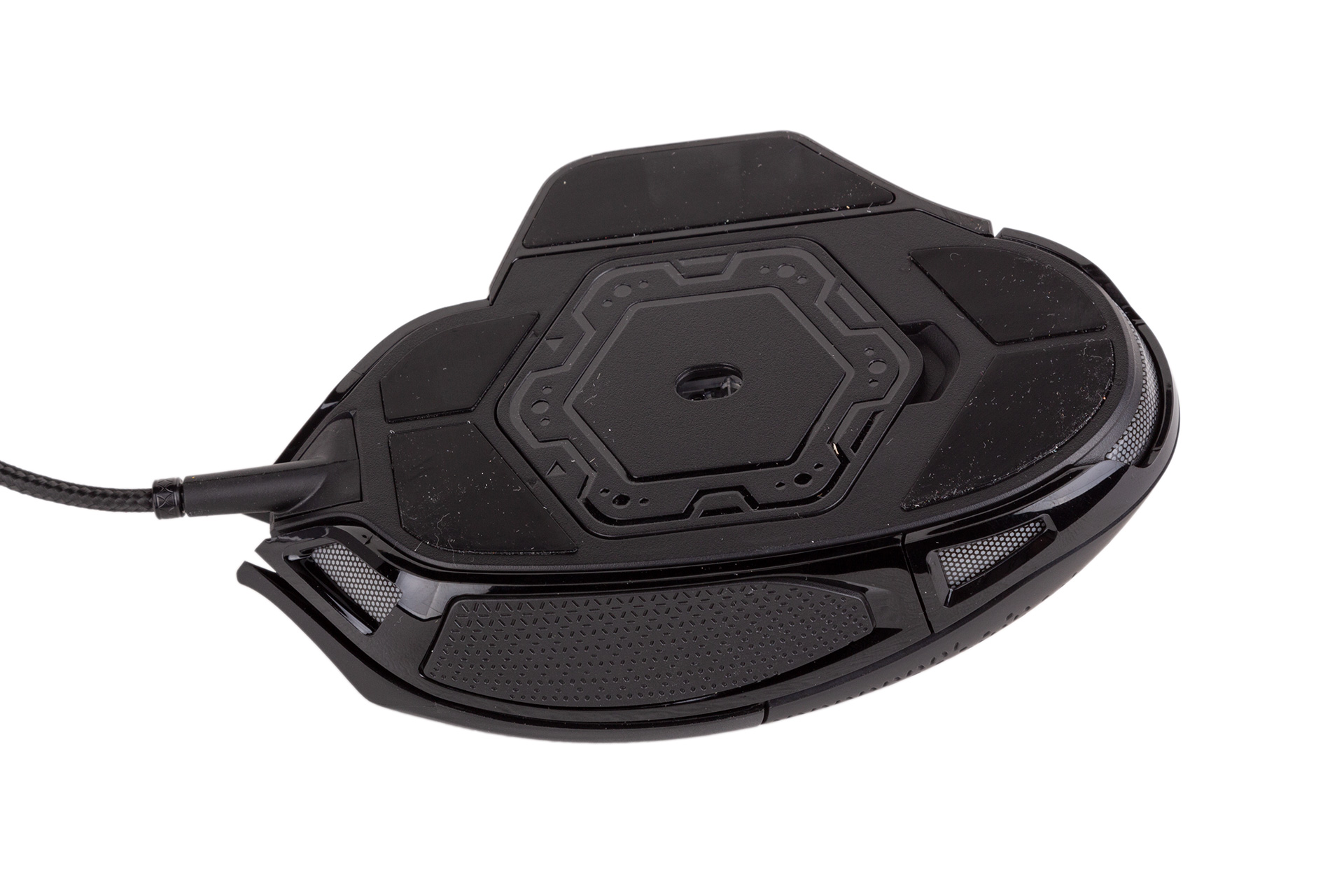
You’ll also find five very large PTFE feet on the underside, and glides with this mouse are extremely smooth. The 1.8m USB cable is braided and emerges from the centre of the mouse without dragging too much on the desk.
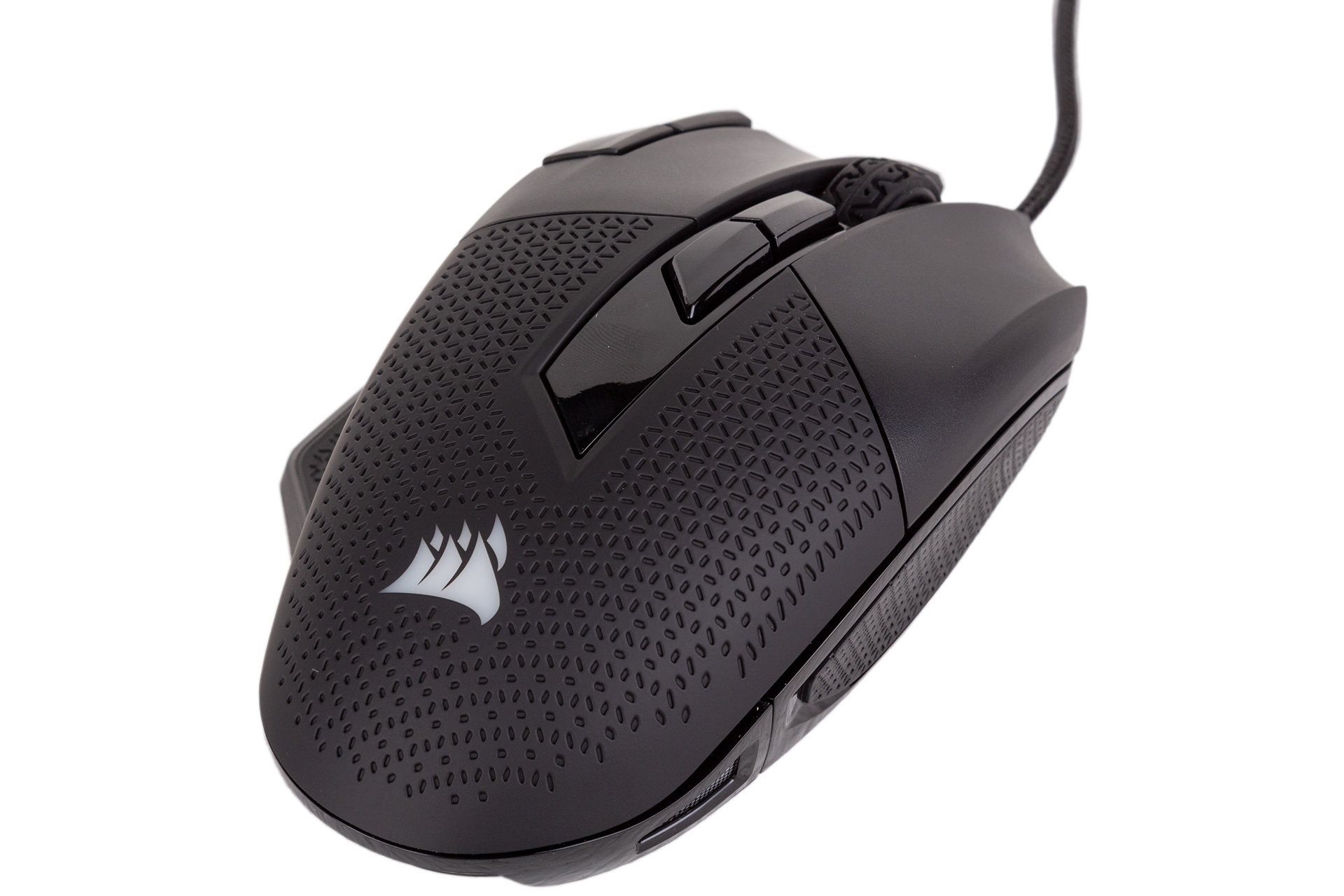
The left/right buttons straddle Omron switches rated to a lifetime of 50 million clicks, and these have an excellent, crisp action as usual. I’m also a big fan of the scroll wheel, as it feels secure in its housing, the click action is distinct and satisfying, and the notches are easy to feel but not overdone.
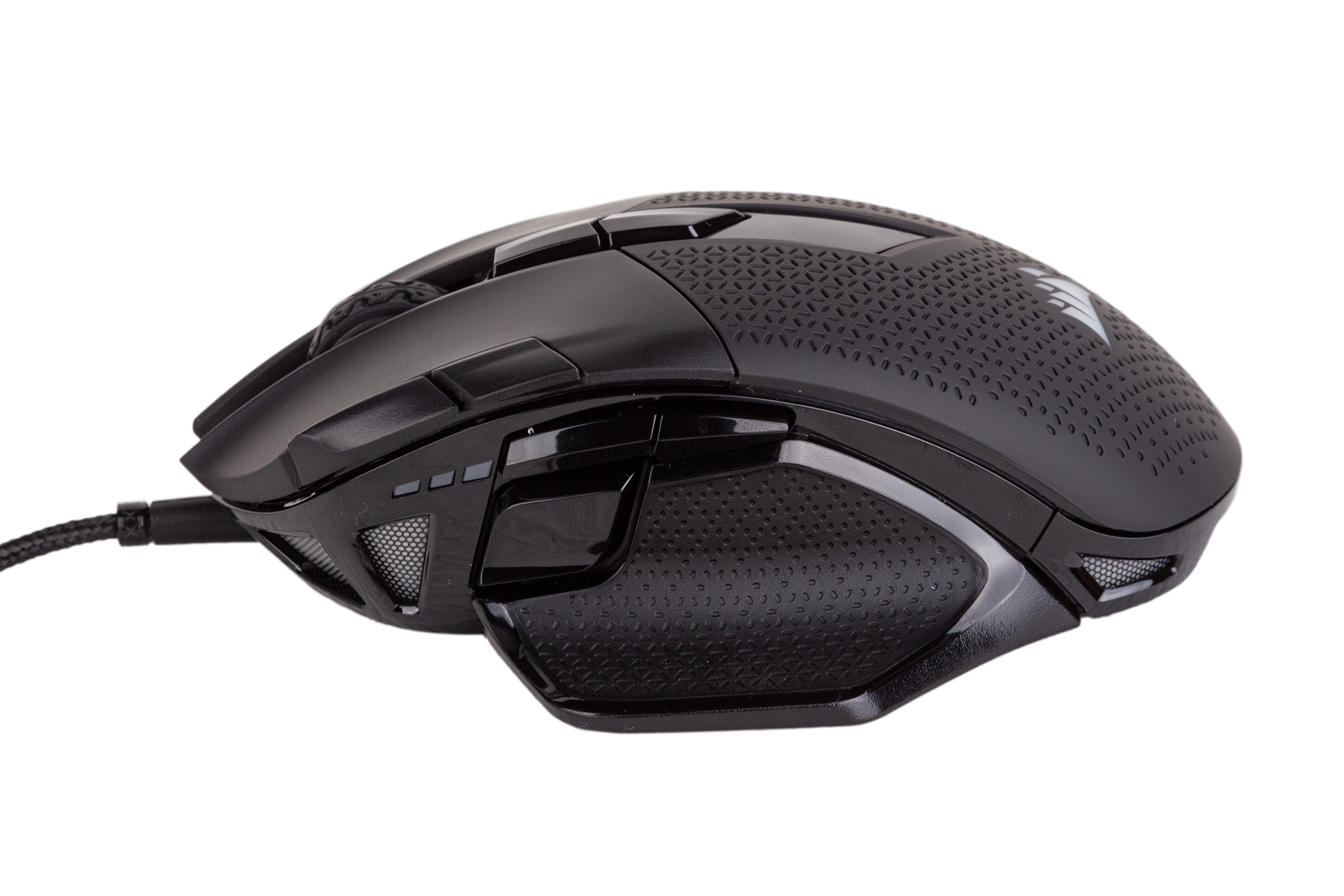
Below the scroll wheel are two profile adjustment buttons, and the top-left of the mouse has another pair of clickers, this time assigned to DPI adjustment. Finally, the thumb area has your typical back/forward combination as well as a larger DPI clutch at the tip of your thumb. The position and feel of each of these extra buttons are mostly fine, but the furthest back DPI button requires quite the finger scrunch, and the back/forward buttons are spongy and uncomfortable to press thanks to their angular design – these are probably my least favourite part of the Nightsword RGB’s physical design. Given how much I used these buttons day to day, this is a real sticking point for me.
All 10 buttons are programmable with the only limitation being the need to have a left click, naturally. The Nightsword RGB has enough memory to allow for three proper onboard profiles to accompany it to whichever desk it might happen to grace, meaning you won’t have to install Corsair’s bloated iCUE software once you’re set up. There are, as usual, some functions that do require software, but the software does well in informing you what these are – more on that over the page.
It wouldn’t be a Corsair mouse without RGB now, would it? The Nightsword RGB is more RGB-heavy than many of Corsair’s more recent offerings, as it has four distinct zones. The rear logo and scroll wheel light up independently as do the front and back headlight-style sections.

Corsair also uses LEDs to feedback information to the user, with a three-tiered indicator zone placed just beyond your thumb, making it easy to see at a glance. Although typically used to indicate the current DPI level, they also all illuminate red (or whatever colour you pick in software) for a few seconds whenever you switch profile – some reassuring feedback.
The PixArt PMW3391 is one of the more advanced optical sensors on the market today and is found in other high-end Corsair mice. It can track at up to 18,000 DPI, which is frankly ridiculous, though since I believe it to be based on the well-regarded PMW3360 that has a native resolution of 12,000 DPI, I suspect some interpolation is being used beyond this point, but it’s pretty meaningless at so high a level. It can be tuned in 1 DPI intervals, so you can safely blame your 18th placement in Apex Legends on accidentally having set 1,338 DPI instead of the obvious optimum. You can also adjust the polling rate of the Nightsword RGB to 125Hz, 250Hz, 500Hz, or the default 1,000Hz.
In terms of performance the sensor again holds up to scrutiny and exhibited no signs of jitter at reasonable DPI levels. Similarly, there was no trace of angle snapping or nasty acceleration/deceleration effects during my oh-so-rigorous Paint and CS:GO testing. The lift-off distance is somewhere between the heights of two and three optical discs, which is a tad high but not disastrous, and there’s no option to alter it.

MSI MPG Velox 100R Chassis Review
October 14 2021 | 15:04

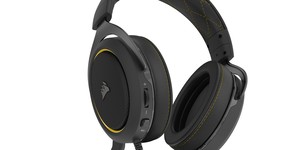

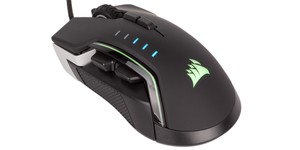




Want to comment? Please log in.